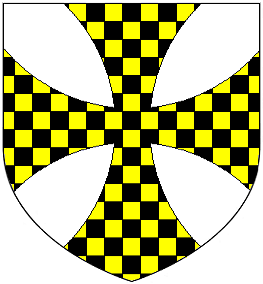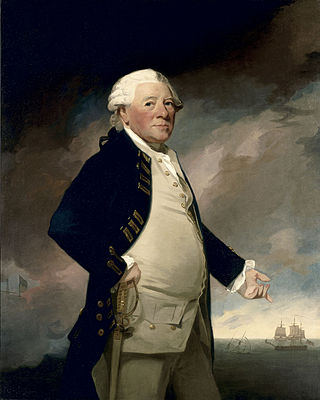
Baron Wenlock is a title that has been created three times, once in the Peerage of England and twice in the Peerage of the United Kingdom. The first creation came in 1461 when the soldier Sir John Wenlock was summoned to Parliament as Lord Wenlock. However, he was childless and on his death in 1471 the title became extinct.
There have been three baronetcies created for members of the Anstruther family, two in the Baronetage of Nova Scotia and one in the Baronetage of Great Britain. Two of the creations are extant while one is extinct.
There have been ten baronetcies created for persons with the surname Browne, six in the Baronetage of Great Britain, three in the Baronetage of Ireland and one in the Baronetage of Nova Scotia. Only one creation is extant as of 2010. Three of the creations were for members of the Browne family headed by the Viscount Montagu.

There have been six baronetcies created for persons with the surname Smyth, two in the Baronetage of England, one in the Baronetage of Great Britain, one in the Baronetage of Ireland and two in the Baronetage of the United Kingdom. One creation is extant as of 2010.

There have been seven baronetcies created for persons with the surname Parker, three in the Baronetage of England, two in the Baronetage of Great Britain and two in the Baronetage of the United Kingdom. Two of the creations are extant as of 2008. Though none of the different families of baronets were related, several supplied a number of flag officers to the Royal Navy.
There have been three baronetcies created for members of the Gore family, all in the Baronetage of Ireland. All three titles are extant. The family also holds two earldoms and a barony.
Sir Scrope Bernard-Morland, 4th Baronet was a British politician and baronet.
There have been five baronetcies created for people with the surname Walker, one is extinct, four are extant.

There have been three baronetcies created for members of the Blakiston family of Blakiston, County Durham, two in the Baronetage of England and one in the Baronetage of Great Britain. One creation is extant as of 2008.

There have been twenty one baronetcies created for persons with the surname Williams, eight in the Baronetage of England, three in the Baronetage of Great Britain and ten in the Baronetage of the United Kingdom. Only six of the creations are extant as of 2017.

There have been four baronetcies created for persons with the surname Miller, two in the Baronetage of England, one in the Baronetage of Great Britain and one in the Baronetage of the United Kingdom. Two of the creations are extant as of 2008.
There have been six baronetcies created for persons with the surname Thomas, three in the Baronetage of England, one in the Baronetage of Great Britain and two in the Baronetage of the United Kingdom. Two of the creations are extant as of 2016.

The Worsley family is an English family that is derived from Sir Elias de Workesley, a Norman knight who was a youth at the time of the Norman conquest. He later accompanied Duke Robert II of Normandy on the First Crusade and was buried at Rhodes.

There have been four baronetcies created for people with the surname Drake, three in the Baronetage of England and one in the Baronetage of Great Britain.

There have been four baronetcies created for members of the ancient House of Beaumont, all in the Baronetage of England. All four creations are extinct or dormant.
There have been four baronetcies created for persons with the surname Hay, all in the Baronetage of Nova Scotia. Two creations are extinct, one dormant and one extant. A fifth baronetcy in the Jacobite Peerage, although theoretically extant, is not recognised by the Lyon Office.

There have been four baronetcies created for persons with the surname Cope.

There have been two baronetcies created for persons with the surname Leicester, both in the Baronetage of England. The fifth Baronet of the second creation was raised to the peerage as Baron de Tabley in 1826. Both the barony and the two baronetcies are now extinct.

The Hastings, later Abney-Hastings Baronetcy, of Willesley Hall in the County of Derby, was a title in the Baronetage of the United Kingdom. It was created on 28 February 1806 for the soldier Sir Charles Hastings. He was the illegitimate son of Francis Hastings, 10th Earl of Huntingdon. Hastings married Parnel Abney, daughter and heiress of Thomas Abney, of Willesley Hall, Willesley, Derbyshire, and granddaughter of Sir Thomas Abney, Justice of the Common Pleas. He was succeeded by his eldest son, Charles, the second Baronet, who assumed, by Royal Licence dated 1 December 1823, the additional surname of Abney, before that of Hastings, on succeeding to the Abney estates through his mother. Abney-Hastings represented Leicester in Parliament between 1826 and 1831. The title became extinct on his death in 1858. Abney-Hastings's Blackfordby and Packington estates passed to his kinsman Henry Rawdon-Hastings, 4th Marquess of Hastings, while Willesley Hall was left to Lady Edith Maud Rawdon-Hastings, later Countess of Loudoun, the Marquess's eldest sister and wife of Charles Frederick Clifton, who in 1859 assumed the surname Abney-Hastings.
There have been two baronetcies created for members of the Hussey family, both in the Baronetage of England. Both creations are extinct.











